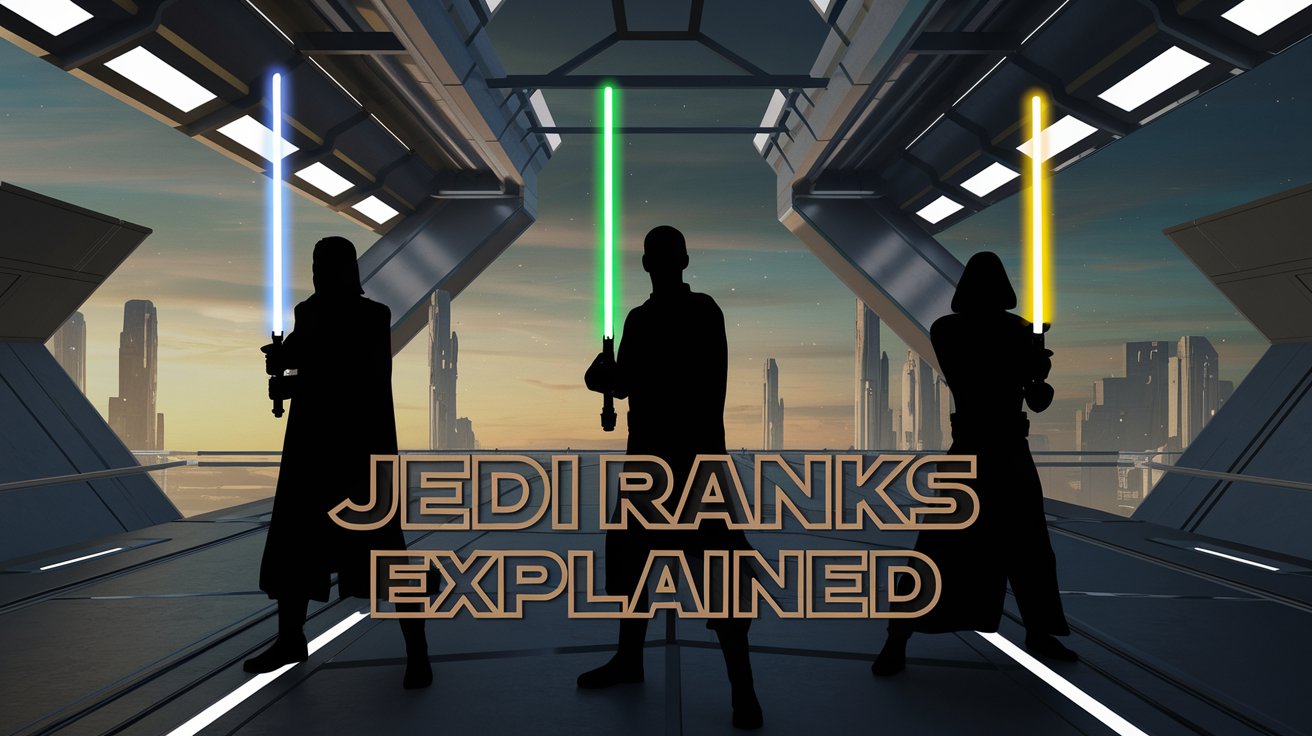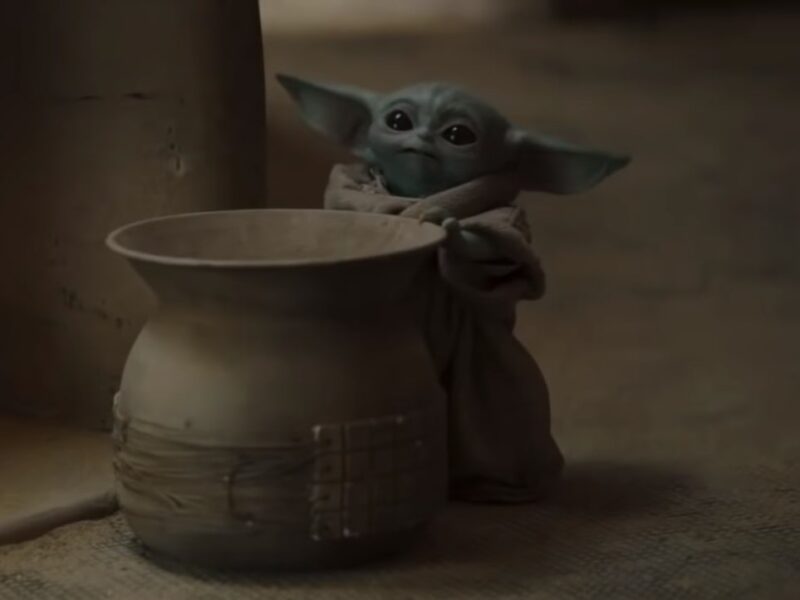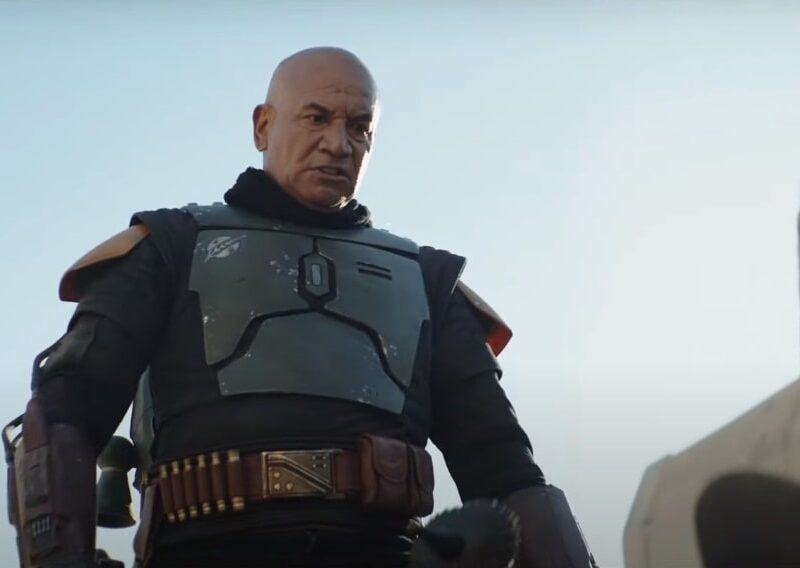The Jedi Order is a vast and intricate organization that has evolved over millennia, structured with ranks and roles reflecting its members’ skills, responsibilities, and dedication to the Force. This article explores the hierarchy within the Jedi Order, detailing its primary ranks, specialized paths, and military titles. From the revered Grand Masters to the skilled Jedi Commanders, each rank plays a distinct and vital role in upholding peace, justice, and the ideals of the Jedi.
The article begins by outlining the primary Jedi ranks, such as Initiates, Padawans, Knights, and Masters, emphasizing their progression and significance. It then delves into the specialized branches that Knights may pursue, including the combat-focused Guardians, the diplomatic Consulars, and the versatile Sentinels. Lastly, it examines the military roles held by Jedi during the Clone Wars, highlighting their leadership within the Republic’s Grand Army and the tragic events of Order 66 that marked the downfall of the Jedi Order.
1. What Are the Ranks in the Jedi Order?
The ranks in the Jedi Order are Grand Master, Master of the Order, Jedi Master, Jedi Knight, Jedi Padawan, and Jedi Initiate.
1.1 Jedi Grand Master
The title of Grand Master, also referred to as Grand Jedi Master, was typically granted to the oldest and wisest Jedi. While the Master of the Order led the Jedi High Council, the Grand Master served as the head of the Jedi Order. During the High Republic Era, this title was held by Jedi Masters Xo Lahru, Pra-Tre Veter, and Yoda. Yoda remained the Grand Master during the final years of the Galactic Republic and was one of the few Jedi to survive the Great Jedi Purge at the conclusion of the Clone Wars.
The role of Grand Master was distinct from that of the Master of the Order, though it was possible for one individual to hold both titles. The Grand Master humbly guided the youngest members of the Jedi Order, the younglings, completing the cycle of Jedi training. According to Tera Sinube, it was rare and highly regarded for a Grand Master to personally train a Padawan. On occasion, the Jedi Order had multiple Grand Masters serving simultaneously.
1.2 Master of the Order
The title Master of the Order, also called Master of the Council or Grand Master of the Jedi High Council, referred to the elected leader of the Jedi High Council. This role was distinct from the Grand Master, who served as the overall leader of the Jedi Order. The Master of the Order was chosen through a unanimous vote by the twelve members of the High Council.
During the late era of the Galactic Republic, Jedi Masters Mace Windu and Yoda each held this position at different times. While major decisions were made collectively by the High Council, the Master of the Order often engaged with Jedi Knights, politicians, and leaders from various systems in informal meetings to exchange ideas and address concerns.
1.3 Jedi Master
Jedi Master was a rank within the Jedi Order granted to wise and powerful Jedi, many of whom served as prominent leaders. Only Jedi Masters could hold seats on the Jedi High Council, with a notable exception being Anakin Skywalker, who was appointed to the Council as a representative of Supreme Chancellor Sheev Palpatine despite being a Jedi Knight.
A Jedi Master was a Jedi Knight elevated to this rank after demonstrating exceptional readiness, experience, and devotion to the Force. This promotion required recognition by the Jedi Grand Master and signified a Knight’s readiness for greater responsibilities within the Order. Attaining the rank of Jedi Master was a significant milestone, reflecting years of dedication and self-improvement.
Once promoted, Jedi Masters were expected to pursue independent studies of the Force, furthering their understanding and abilities. The Jedi High Council viewed this continued self-improvement as a vital responsibility of the rank. Jedi Masters also played a critical role in training younglings in the early stages of their education in the Force, with direct mentorship often provided later by either a Jedi Knight or Master.
During the Clone Wars, Jedi Masters and Jedi Knights served as Jedi Generals in the Republic Military, while Padawans took on the role of Jedi Commanders. In moments of gravity, Jedi Masters were expected to respond with seriousness and wisdom, reflecting the high standards of their rank.
1.4 Jedi Knight
A Jedi Knight was a member of the Jedi Order who had completed their training, including education at the Jedi Academy, one-on-one mentorship as a Padawan, and the successful completion of the Jedi Trials.
As full members of the Order, Jedi Knights took on assignments from the Jedi Councils, working to uphold peace and maintain order within the Galactic Republic. Representing the majority of the Order, Jedi Knights were the most recognized rank by the public, leading many to refer to any Jedi as a “Knight.”
1.5 Jedi Padawan
A Padawan, also called a Padawan learner, Jedi apprentice, or simply apprentice, was a stage in Jedi training where a Force-sensitive individual trained under the guidance of a Jedi Knight or Master. Traditionally, a Jedi Master selected their Padawan, but during the Clone Wars, the Jedi High Council began assigning apprentices. Padawans had to complete their training and pass the Jedi Trials to attain the rank of Jedi Knight.
During the Clone Wars, Padawans received combat training and served as military commanders leading clone troopers. However, the war’s conclusion saw the enactment of Order 66 by Supreme Chancellor Sheev Palpatine, compelling the clones to betray the Jedi. Despite this, some Jedi survived. Under the mentorship of survivors Obi-Wan Kenobi and Yoda, Luke Skywalker was trained as a Jedi. Skywalker later sought to rebuild the Jedi Order, but most of his apprentices were killed, and Ben Solo succumbed to the dark side. Years later, Rey, a scavenger from Jakku, became the apprentice of both Luke Skywalker and Leia Organa, continuing the Jedi legacy.
1.6 Jedi Initiate
Jedi Initiates, also known as younglings, were Force-sensitive children recruited by the Jedi Order from various species across the galaxy. From a young age, they began their foundational training in the Jedi arts at the Jedi Temple on Coruscant. Their education also took them to the planet Ilum, where they participated in the Gathering, a sacred rite of passage in which younglings selected their kyber crystals to construct their lightsabers. Before advancing to the next stage of training, Grand Master Yoda often instructed younglings in the ways of the Force during his long tenure. Younglings had to successfully pass the Initiate Trials to qualify as Padawans, preparing them for apprenticeship under Jedi Knights or Masters.
During the Clone Wars, the Jedi Order faced existential threats orchestrated by Darth Sidious, the Dark Lord of the Sith. As part of his plans to establish a force of dark side acolytes, Sidious arranged the abduction of several Force-sensitive infants intended to become younglings. Although the Jedi thwarted this scheme, their efforts to protect the next generation were ultimately undone by Order 66 and the rise of the Galactic Empire, which led to the tragic destruction of the Jedi Order and the deaths of the younglings.
2. What Are the Specialized Ranks Within the Jedi Order?
Upon ascending to the rank of Jedi Knight, Padawans could choose from three specialized paths within the Jedi Order. Based on their skills, preferences, and talents, newly promoted Knights could become Jedi Guardians, Jedi Consulars, or Jedi Sentinels after successfully passing the Jedi Trials.
2.1 Jedi Guardian
A Jedi Guardian was one of the three primary branches within the Jedi Order. Known for their combat expertise, Jedi Guardians were considered the light side equivalent of Sith Warriors. Their role within the Order remained largely consistent throughout history, though it was formally documented for the first time by the Guardian Jedi ace, Crix Sunburris, in The Jedi Path: A Manual for Students of the Force.
2.2 Jedi Consular
A Jedi Consular was a diplomat and mediator guided by the Council of Reconciliation, dedicated to promoting peace and harmony within the Galactic Republic.
Jedi Consulars only drew their lightsabers as a last resort, preferring to study the mysteries of the Force. While their role remained mostly consistent throughout history, it was first documented by the Jedi Seer Sabla-Mandibu in The Jedi Path: A Manual for Students of the Force.
2.3 Jedi Sentinel
Jedi Sentinels represented a balanced approach between the philosophies of the Jedi Consulars and Jedi Guardians. While Sentinels possessed notable combat skills and a solid understanding of the Force, they distinguished themselves by integrating non-Force-based abilities, such as expertise in security, computers, stealth, demolitions, repair, or medicine.
These practical skills often defined their approach to challenges; for instance, where a Guardian might break down a locked door and a Consular might use the Force to open it, a Sentinel would rely on tools or ingenuity to pick the lock.
The role of the Jedi Sentinel remained consistent throughout the Order’s history, emphasizing versatility and resourcefulness.
3. What Are the Military Ranks Held by Jedi?
The military ranks held by Jedi are High General, General, and Commander.
3.1 High Jedi General
The title of High Jedi General, or simply High General, was a prestigious military rank held by Jedi within the Grand Army of the Republic. Those who attained this rank commanded one of the ten Systems Armies during the Clone Wars. Jedi Master Obi-Wan Kenobi was among the notable individuals to serve as a High Jedi General.
3.2 Jedi General
Jedi Generals were senior military leaders within the Grand Army of the Republic. Initially an informal designation, the title was formalized in 22 BBY early in the Clone Wars, exclusively granted to Jedi Knights, Jedi Masters, and members of the Jedi High Council, the ruling body of the Jedi Order. In this role, Jedi Generals commanded the Republic’s clone trooper forces in their fight against the Confederacy of Independent Systems.
By 19 BBY, the Jedi were stretched thin across the galaxy. As the war neared its end, Supreme Chancellor Sheev Palpatine enacted Order 66, a directive compelling the clone troopers—programmed to obey without question—to eliminate the Jedi Order. This betrayal led to the immediate execution of many unsuspecting Jedi generals by their own troops. However, a few managed to survive and go into hiding, including Obi-Wan Kenobi and Grand Master Yoda.
With the majority of the Jedi leadership eradicated, Palpatine, secretly the Sith Lord Darth Sidious, proclaimed himself Emperor of the Galactic Empire. Anakin Skywalker, a former Jedi General who succumbed to the dark side, became Palpatine’s apprentice and enforcer under the name Darth Vader.
3.3 Jedi Commander
During the Clone Wars, Jedi Commanders held positions as military officers within the Grand Army of the Republic. This rank was established shortly after the First Battle of Geonosis, the initial confrontation of the Clone Wars, and was conferred upon Padawans of the Jedi Order in 22 BBY. As commanders, they wielded authority over the clone troopers of the Grand Army, including clones holding ranks like Clone Captain. However, much like within the Jedi Order itself, Jedi Commanders were subordinate to Jedi Generals—fully trained Jedi Knights and Masters.
Typically, Jedi Commanders operated alongside their masters, who held the rank of general, but they were also tasked with completing independent missions when required. As the war between the Galactic Republic and the Confederacy of Independent Systems drew to a close in 19 BBY, the Jedi officers faced betrayal due to Order 66. This military directive labeled all Jedi as traitors to the state, prompting clone troopers to turn on and eliminate their Jedi leaders. While many Jedi perished in the purge, some survived and went into hiding. Among the survivors were Commander Caleb Dume and former Commander Ahsoka Tano, both of whom later played important roles in the Alliance to Restore the Republic during the Galactic Empire’s reign.
Explore Our Lightsaber Collection
Tony Allen is a writer for LightsabersBlog.com, a website focused on everything related to lightsabers. Tony grew up in Austin, Texas, and went on to study Mechanical Engineering at the University of Texas. Passionate about science fiction and fantasy, Tony has always been deeply involved in hobbies like tabletop RPGs, sci-fi novels, miniature painting, and crafting. This love for creative pursuits drives Tony to write about lightsabers in a way that ignites the imagination of fans around the world.









































